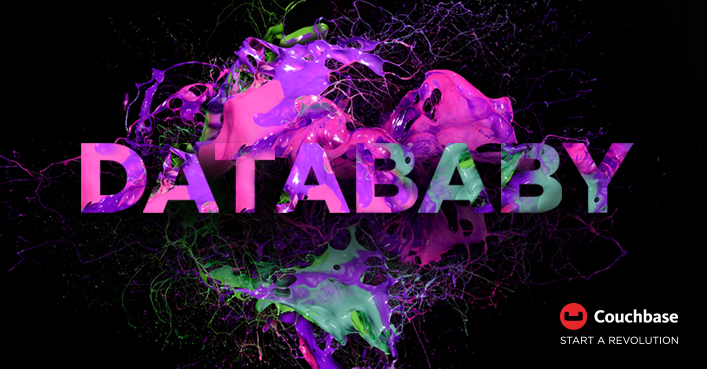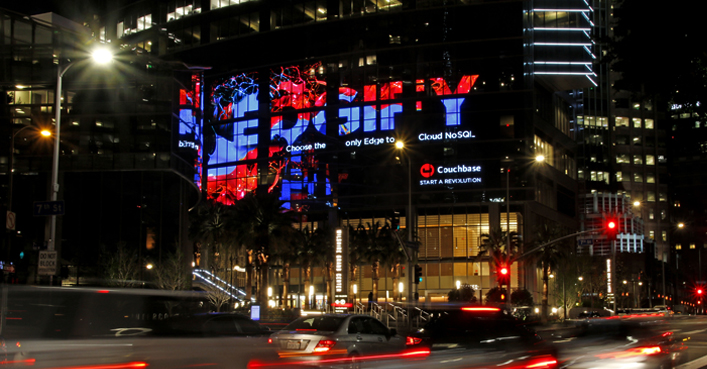|
Archive:
June 2018
June 28th, 2018

My dear reader, I can tell you without reservation that we do not make enough time for feelings in Marketing. Even though feelings, not logic, are the secret to great marketing.
We buy things because they make us feel good.
Oh, when pressed, we muster up all kinds of malarkey designed to justify our actions and hide our capricious nature from view. Your customers are no different. Even hard core business buyers are heavily influenced by perception and awareness. Which is why big brands invest so heavily in awareness studies (only to flail around trying to tie changes in influence to sales patterns).
Engineers are the absolute worst at acknowledging their true feelings. But masking feelings does not remove emotion from the equation—it just makes our jobs that teensy bit harder.
And introduces additional impediments to innovation and velocity.
Here at Mortar, we are big believers in the power of de Bono’s legendary six thinking hats exercise for giving workshop participants permission to indulge their emotions—and share their deepest feelings about a project.
The results are often surprising.
Here are five reasons you should do the same, and encourage your team to indulge in the weepy side of a project:
Stanford says we should. The cornerstone of Stanford’s famed MBA program is Interpersonal Dynamics, which pretty much everyone calls “Touchy-Feely.” “The ability to forge strong relationships with others is crucial to becoming a more effective manager in today’s complex, global, and highly interdependent organizations,” says Stanford. You can’t build relationships without feeling. Interestingly, Touchy-Feely has been the most popular elective for at Stanford’s Graduate School of Business for 45 years.
How people feel drives how they act. By listening to your team’s deep-seated concerns, you can effectively ease anxiety—freeing up previously masked aspects of your plan. You can win friends and smooth forward progress just by listening. (Of course, how you listen is a trick in itself—for which might we suggest, ahem, these guys?).
People, i.e., customers and teams, buy on emotion and yes, logic. It may not always feel like it, but business-to-business marketers do have permission to indulge in the more advanced forms of emotional marketing. The more technology verges into the realm of consumer preference, app development, community marketing, networking and customer advocacy, the more we can borrow from giants like Apple, Nike and Google—and present our products as something truly amazing, smart and human.
The other guys won’t do it. Indulging how your team feels about the project, and understanding the emotions surrounding the opportunity—good and bad—is often neglected. It makes most of us uncomfortable and can feel like a weird thing to do in corporate America. It is thus a source of competitive intelligence denied to most. We may be afraid of asking our colleagues how they really feel about their work and the jobs they have been given, but in today’s race to the finish line, any advantage—especially one so easily accessed—can prove decisive.
It works. Every marketing brief we write at Mortar has two components: how we have decided the client will be different, and the A-ha moment that is made possible because we have made the choice to focus on something new and surprising. We start with the logic, but we land with emotion. In our pursuit of emotive reasons to believe, we never case to be amazed at the quality of information our clients (and their customers) share when asked to detail how they feel about the job at hand. Don’t take my word for it, try it: ask your customers about how they feel about you and to detail their A-ha moment. They will ALWAYS offer an answer.
At the beginning of projects we often ask workshop participants to share a favorite object to illustrate their feelings about the topic. One Marketing Director opened a meeting with a colon-cleansing kit to demonstrate how inefficiently the organization approached marketing decision making, and to make her hope that this time would be different. We used that same example in our final presentation to management to highlight the need to address internal frustration and move forward with confidence and gusto.
Medical and technical marketing can’t help but over-rotate towards logic, science and the facts. But in any pursuit of advantage it always pays to seek out easy ways to differentiate and move forward.
Is today the day you invite team members to share how they really feel about the product they are about to launch?
June 27th, 2018

We are big believers in Moore’s Markets Adoption Theory (famously known as Crossing the Chasm) here at Mortar. (In fact, it’s so bad my colleagues think I should tattoo it on somewhere on my body).
Many of you are probably already using Moore’s thinking, but for the uninitiated, allow me to present THE SINGLE GREATEST MODEL FOR LAUNCHING A NEW IDEA. ANY NEW IDEA. There. I don’t think that is overdoing it all.
Moore’s model is not the first to describe the path innovation takes from whimsy to mainstream. But it is one of the best. And the popularity of the model makes for easy meetings with innovators and those who love them.
Now, if you asked a hundred people if you were crazy, and only one said yes, would you believe them?
Moore says maybe you should.
For Moore the early market is a special place. It’s populated by those on the fringe. People who care about features others ignore. In many ways, Disaster Preppers are in the early market for the apocalypse. Likewise, Flat-Earthers never crossed the chasm to join the rest of the world in believing the world is round (wait, what?).
But not every member of the early market is crazy. Some of the most passionate early adopters can be found in august institutions like Johns Hopkins, the Mayo Clinic, Stanford, UCSF Medical Center as well as mainstream giants like VMware, IBM and Cisco. And they can be found in every start-up. (Although, beware, not every start-up employee is a visionary… more on that in a second).
The first buyers of new ideas are often visionary in character, attracted by revolutionary change, and largely comfortable with half-baked features that others regard as untested or unfinished.
But these pioneers are also prone to be needy, goal obsessed, and keen to brag. Especially about being the first on the block to grab innovation by the horns and wrestle it into submission.
And, because they are obsessed with the new and promising, they will also be among the first to quit. Visionaries like to jump onto the next big thing. And that can be a problem. The early market is a dynamic, fickle force which can be hard to tame and even harder to keep caged.

Source: Wikipedia
Here are five things about the early market most overlook:
- The early market is always in the minority. i.e. It will be small. So if you talk to 100 people about your new product, less than two may say it’s awesome. 98% will tell you it sucks. And a 98% rejection rate is hardly compelling evidence that you’re onto something. And yet, that is exactly what you can expect in early market testing.
- People who sell to the early market are rarely comfortable selling to early adopters. Your team, those stalwarts who have chosen to join you on the front line of change, they too are surrounded by doubters and skeptics. So is your Board. And your investors. Everyone wants guarantees. Or at least promises. They will all push you to go for the money. Now. And the money lies in the fattest part of the bell curve with the elusive majority. So why aren’t you selling there now? Moore urges caution and the need to establish a beachhead first. But to do that is to sit back while someone else exploits the fat found in the middle of the herd! To win with early adopters is to focus on them and them alone: and that is often a counter-intuitive move. Savvy early marketers limit discussion to early market needs, focus research on early desires, and largely ignore what the rest of the market has to say. Don’t make the mistake of testing early ideas with the majority as the results are unlikely to be helpful.
- The early market is very different from the late market. To find where you are on the curve, it’s important to understand the differences between the two groups. Somewhere in your product’s journey to success is a gap. This “chasm” lies between the radicalized, crazy, fanatical first customers and their more prudent, careful, and risk-averse brethren. Put simply, pragmatists don’t trust visionaries. Pragmatists think visionaries are crazy. And pragmatists bore visionaries with their endless prattling about avoiding risk and loading up with check-box features that few want. Yet, significant numbers of pragmatists have to be swayed by visionaries for an idea to root and blossom. There is a gap between the two groups: and most new ideas fail trying to bridge the yawning chasm between pioneer and pragmatist.
- The traffic moves in one direction: from left to right, early to late. Ideas move from new to old. They are birthed. They grow. Mature. And eventually pass into the mainstream. And after a while they wither and die. The point here is that they rarely pass from mature to death and back to sexy again (note I said rarely: fashion is well known for resurrecting dead ideas, which partially explains why my teens are crazy about bell-bottoms). It is hard for a new idea to retrace its steps, especially when the gloss has worn off. One is reminded of the old saw “you never get a second chance to make a first impression.” If you are stewarding a new idea across the chasm, you will do well to avoid jumping too early.
- Your industry is not any different. Don’t fight the theory, embrace it. We (by which we mean the smart people and, yes, Mortar) have been teaching diffusion theory since Rogers first published Diffusion of Innovations in 1962 (check this out). It’s hardly a new idea or a novel expression of market development. The principles are tried and tested. Sure you can break into a market by penetrating the middle: but it takes a lot of effort and cash. That’s why so many Super Bowl advertisers are major, established brands — Coke, Pepsi, Jeep, Bud — and why so few companies trust debuting a novel idea in a $3 million commercial (although there is a stand out or two every year). Still, if you are launching an idea outside the mainstream, you can gain a significant advantage by embracing the lessons of market adoption theory and watching your own customers for the telling signs of quivering, flighty pioneerdom. Or you send me an email and we’ll do it for you.
* This article has been updated from our original publication: “The Joys of Selling to the Early Market” here.
June 25th, 2018

Engineers and Creatives are wired differently.
What one group regards as self-evident and logical, the other is just as likely to dismiss as tepid or irrelevant. And yet it is every technology marketers noble mission to unite these two groups to produce the right blend of messaging.
It’s rarely easy.
In fact, I’m reminded of the story of the Great Architect who decided to build a bridge with a unique feature: a 20-foot gap midway across the span.
Drivers who exceeded 50 mph would effortlessly sail across the open gap thousands of feet above a canyon below. Tourists would flock to the new attraction and the neighboring town.
Opening day dawned.
The first driver accelerated towards the gap at 50 mph as instructed. Only instead of sailing effortlessly over the yawning hole, the driver plunged through the gap to a fiery death on the chasm floor below.
The distraught, but nevertheless still Great, Architect immediately rushed over to his horrified engineers. They agreed their calculations were indeed faulty and that any further traffic should cease.
Seeking a second opinion, the Great Architect turned to his designers. But unlike the engineers, the creative team responded with disdain “What? Are we going to make all our decisions after just one bad test?”
Readers of this story will be forgiven for concluding that given their different viewpoints, the best way to manage technical and creative teams is to separate them.
And when it comes to developing marketing strategies, many agencies do exactly that.
In isolation, they identify what the engineers want said. Cement it into a brief of some sort. And pass the newly minted instructions through to the waiting creative team.
Which, of course, is a horrible way to work. And a sure-fire way to introduce barriers when we should be building bridges (admittedly one without giant holes).
If you are interested in a smarter way to forge a partnership between technical and creative teams, drop us a line at heythere@mortaragency.com, subject “Crazy Bridge”.
For more on how to avoid the consequences of chronic marketing inefficiency, brought on by the failure to collaborate, see “THE SUCKER FOR PUNISHMENT DILEMMA: WHAT IF YOUR CREATIVE AGENCY IS WORKING WITH(OUT) YOU? at Mortarblog.com. Or the follow-up post: “LIFE AFTER THE BIG REVEAL: A PROGRESS REPORT“.
PS: A bridge with a huge hole in it is not so crazy. See how some engineers are designing roads that sing.
June 18th, 2018

I never cease to be amazed by the power of small amounts of testing.
I’m reminded of a Mortar client that made water out of thin air (they said it involved condensation, I’m pretty sure the dark arts were involved).
Like most tech teams they were in a hurry, and so the question of testing kept getting pushed further and further down the development cycle.
Only weeks from launch, our strategy was nailed, we knew how our product was different, and we had a new name, logo, and a crisp elevator speech. All that stood between us and the Market was confirmation.
For this project we chose an engagement session: the agency, client team and prospects sit down around a coffee table for a moderated discussion. Although less scientifically objective than traditional focus groups (which make heavy use of one-way mirrors and bowls full of M&M’s) engagement sessions provide a more immersive experience for all parties.
The lessons learned in engagement sessions are often much more powerful, because the team hears the feedback directly and without filter, instead of weeks later as part of a 116 slide PowerPoint deck.
So, there we are, sitting on a couch, with eight early adopters, the pioneers we expect to be among the first to buy, and we launch into our idea.
The CTO lays out the challenge, details the product idea, and is about to reveal our first creative concept when a burly engineer leans forward and asks, “so what does the water taste like?”
The CTO turns green and starts to stammer.
Everyone else on the team is taken aback. Incredibly, we’d been so wrapped up in the genius of the technology that we never asked ourselves this simple question: what does the water our machine makes, actually taste like?
Before we can respond, the engineer says “I bet it tastes awful, am I right?”
Yes, dear reader, it turns out that water condensed from the air (or via the dark arts) has no flavor. And while that may sound like a good thing, it turns out we expect our water to taste like something, and that the lack of any flavor is… well… disgusting. How water tastes is a critical attribute for any water-making appliance.
The discovery that the A-ha Moment for our water-making innovation was not “Wow, I can make water, anywhere,” sent shockwaves through the team.
We had simply not considered that the benefit of providing fresh water would need to include taste.
That was not the only thing we took from our research.
We were also struck by the pride with which our first prospect pointed out the flaw in our marketing.
Members of the early market are often heavily invested in product details and are rarely shy about offering their opinions for improvement or further innovation.
But there is a point, as every innovator will attest, when a product should be hurled into the market, as there is no better indicator of success than purchase and use.
Still, our first customers would regard the lack of focus on taste as a critical product flaw—and it would cloud the bigger story: that they could now make water anywhere.
Not to fix the taste issue would leave our first customers feeling betrayed and ignored.
And it left me scratching my head over how I could have allowed the project to advance so far without considering such a vital factor.
My entire marketing career has been punctuated by moments like these. I have learned the hard way that small, regular doses of feedback from potential customers are an essential ingredient of any successful marketing program.
And experiences like these are why we insist our clients test their A-ha moment before they head to market. For more on Mortar and our emphasis on the A-ha see this post: Five things we learned about A-ha moments in 2017.
June 13th, 2018
One of the most difficult strategic decisions a company can make (especially in tech) is to create a new category. Couchbase came to us looking for a creative way to market a new type of NoSQL database: an Engagement Database.
We developed a series of giant, paint-splattered words that showcased the euphoric A-ha Moment Couchbase customers will experience by using the world’s first Engagement Database.
Take a look at the work we created that’s helping a category creator become the category leader.
    
|









